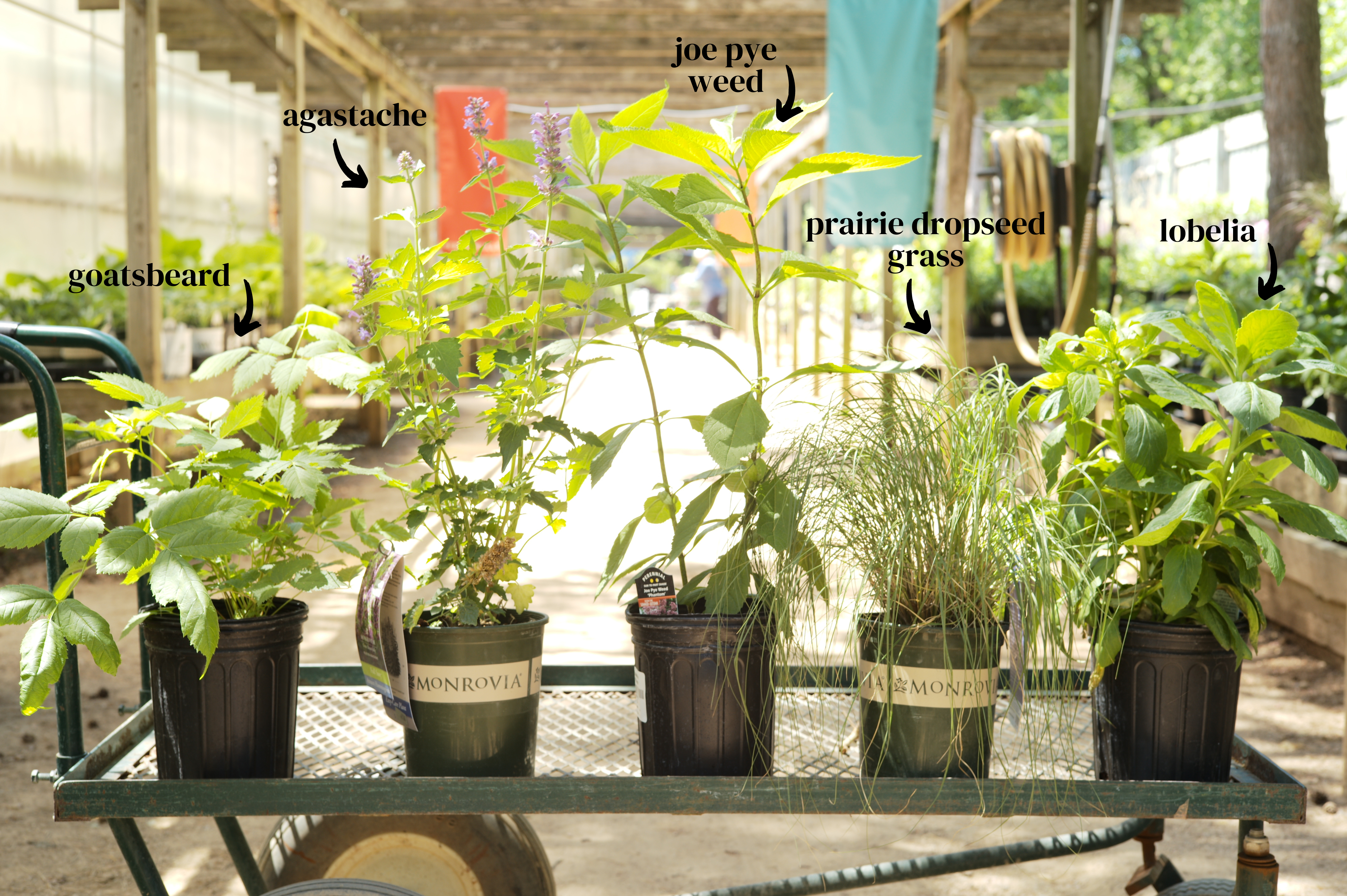Native Plants for Landscaping
Posted by Jessie Jacobson & Val Thies on Jun 18th 2021
A garden is not complete without incorporating the plants of our native landscape. According to the Wikipedia, a native plant is indigenous to a given region or ecosystem if its presence in that region is the result of only natural processes, with no human intervention. The Minnesota DNR considers plants native to our area they were here at the time of the Public Land Survey between 1847 and 1907.
Planting with native plants can be a little intimidating as they have a reputation for being very vigorous growers that can become unruly if left unmanaged in our landscapes. Definitely a divergence from neatly manicured lawns and properly mulched Hostas. However, when planted with intention, native landscapes also known as wild landscapes are super on trend for more reasons than one!
Benefits of native plants
- Sustainable and adapted to flourish in their local climate and soil conditions
- Once established, they seldom need watering, mulching, or protection from winter chills
- Provide nectar, pollen, and seeds for pollinators, birds, butterflies, and other animals
- Help prevent erosion and water runoff because of their deep and spreading root systems
- Many native varieties can be used in rain gardens to help process and filter rainwater
- Act as natural pest control and many are deer-resistant
- Help to detoxify chemicals in the air and water
- Many native wild plants are used by herbalists as natural treatments and remedies

Ecosystems/Native plant communities
A native plant community describes plant species that naturally occur together in a specific area. Each area has a unique set of conditions that include soil, moisture, sun, and climate. A native plant community has dozens of plants that all thrive under those same conditions. Minnesota has many native plant communities including, dry prairies, wet prairies, oak forests, pine forests, and marshes.

Some of our favorite native plants
Agastache foeniculum
Anise Hyssop
- Well drained soil, performs best in sandy prairie conditions
- Full sun
- 30-60” tall
- Blue, tubular flowers from mid-June to September
- Features: anise scent, deer resistant
Aruncus dioicus
Goat’s Beard
- Humus-rich soil, medium to moist location
- Part sun to shade
- 36-72” tall
- White to cream with branching spikes flowers in May and June
- Features: deer resistant, like a non-native astilbe
Amsonia tabernaemontana
Amsonia Bluestar
- Humus-rich soil, medium to moist location
- Full sun to part shade
- 24-36” tall
- Light blue flowers occurring in short cymes from April to July
- Features: Excellent border plant
Andropogon gerardii
Big Bluestem Grass
- Can handle a variety of soil types, drought resistant
- Full sun
- 24-72” tall
- Pink to purple florets in the fall
- Features: Deer resistant, drought resistant, beautiful blue hue and copper fall color
Asclepias tuberosa
Butterfly Weed
- Loose soil, sand to loam
- Full sun
- 12-36” tall
- Orange or yellow 5-parted petals blooming in June and July
- Features: deer resistant, monarch caterpillar larval food
FIlipendula rubra
- Queen of the Prairie
- Rich, loamy, moist soil
- Full sun
- 60-72” tall
- Large flower plums of fragrant rose-pink flowers June-August
- Features: deer resistant
Geum triflorum
- Prairie Smoke
- Medium to dry well-drained soil
- Full sun
- 6-12” tall
- Pink flowers that fade to feathery seed heads that flower in May and June
- Features: deer resistant, great border plant
Iris versicolor
- Blue Flag Iris
- Moist soil, can be planted on the edges of ponds
- Full sun
- 18-24” tall
- Lavender-violet funnel-formed flowers that bloom in June and July
- Features: deer resistant, excellent rain garden plant
Liatris spicata
- Blazing Star/Gay Feather
- Rich, loamy, moist soil
- Full sun
- 36-60” tall
- Purple, spike-like clusters that bloom
- Features: deer resistant
Lobelia cardinalis
Cardinal Flower
- Rich, loamy, moist soil
- Full sun to part sun
- 12-48” tall
- Scarlet, 5-parted lipped flowers that bloom July to September
- Features: deer resistant, excellent rain garden plant
Lobelia siphilitica
Great Blue Lobelia
- Rich, loamy, moist soil
- Full sun to part sun
- 12-48” tall
- Blue, 5-parted lipped flowers that bloom August and September
- Features: deer resistant
Maianthemum racemosum
False Solomon’s Seal
- Rich, moist woodland soil
- Part shade to shade
- 12-24” tall
- Whitish-cream, 6-parted branched clusters of flowers that bloom in May
- Features: deer resistant, bright red berries form after flowering
Physostegia
Obedient Plant
- Rich, loamy, moist soil
- Full sun to part sun
- 24-60” tall
- White or pink 5-parted, 2-lipped tubular flowers that bloom in August and September
- Features—deer resistant
Polemonium reptans
Jacob’s Ladder
- Rich, loamy, moist soil
- Part sun to shade
- 10-20” tall
- Light blue, 5-parted flower that blooms in May and June
- Features: self-seeds in optimal growing conditions
Sporobolus heterolepis
Prairie Dropseed Grass
- Dry, sandy soil
- Full sun
- 24-48” tall
- Late season florets with a silvery sheen
- Feature: Deer resistant
Get going and garden and grab this book to guide you. Planting in a Post-Wild World by Thomas Rainer and Claudia West is an inspiring call to action dedicated to the idea of a new nature. The write, “Over time, with industrialization and urban sprawl, we have driven nature out of our neighborhoods and cities. But we can invite it back by designing landscapes that look and function more like they do in the wild: robust, diverse, and visually harmonious. —a hybrid of both the wild and the cultivated—that can flourish in our cities and suburbs.”
Happy Planting!

